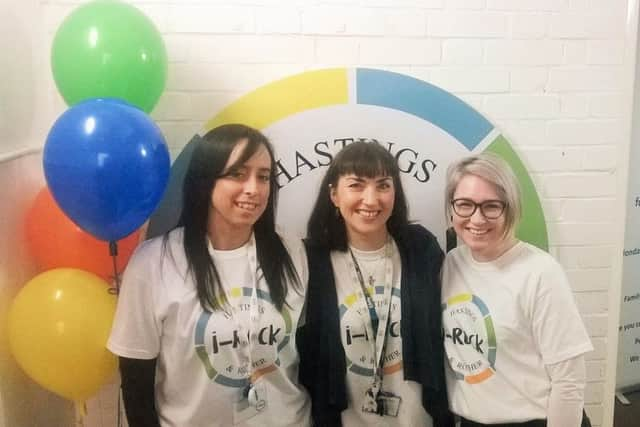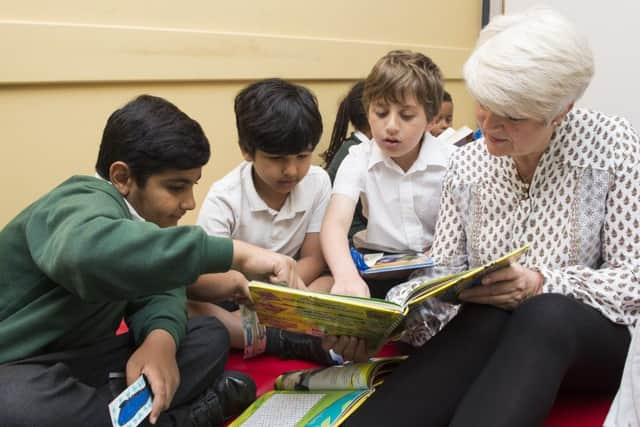What is the Hastings Opportunity Area and how is it helping our schoolchildren?


The National Literacy Trust will launch a campaign to bring partners together from all over Hastings, helping to recruit and train at least 30 ‘literacy champions’ to run their own projects aimed at raising awareness of the importance of good reading, writing and communication skills.
The new hub, worth £125,000 a year, marks the early successes of the Hastings Opportunity Area programme.
Advertisement
Hide AdAdvertisement
Hide AdChildren and Families Minister Nadhim Zahawi said: “The Opportunity Area programme is truly unique – it’s led and driven by the people who know the area best, and understand what motivates and influences their young people. In my visits to many of these Opportunity Areas I’ve seen for myself the passion and commitment of those involved, who are tackling deep-rooted issues like low school attendance, poor mental health or low confidence with reading and writing. All of these things hold people back from fulfilling their potential.


“This is just the beginning, and a chance to reflect on what we are doing to foster ambition in young people in these areas. Focusing on projects where we can make the greatest difference, our Opportunity Areas will help raise the aspirations and opportunities for children and young people in Hastings.”
An independent report published by the National Foundation for Education Research has found significant progress has already been made and the programme is ‘starting to develop a lasting legacy’ of positive collaboration.
Hastings’ new literacy hub builds on the Education Secretary Damian Hinds’ pledge to halve the number of children from disadvantaged backgrounds who leave reception without the reading skills they need to thrive at school.
Advertisement
Hide AdAdvertisement
Hide AdThe Opportunity Areas programme, backed by investment worth £72 million, is just one of the ways this Government is striving to provide world-class education, training and care for everyone, no matter their background or where they live. Each of the 12 areas, located all over England, were identified as ‘coldspots’ for social mobility.


Since the programme launched, independent boards made up of headteachers, businesses, charities and other local organisations have been working together to break down the barriers that prevent children and young people from achieving their potential.
An independent report published by the National Foundation for Education Research this week (October 16) to mark the anniversary has found significant progress has already been made and the programme is ‘starting to develop a lasting legacy’ of positive collaboration.
Minister Zahawi held an event in the Houses of Parliament on Tuesday, October 16 with MPs, chairmen of the independent Opportunity Area partnership boards and key local partners from each of the 12 areas to celebrate the progress made so far and announce new projects in each area.
HASTINGS OPPORTUNITY AREA
Advertisement
Hide AdAdvertisement
Hide Ad

In 2016, Hastings was ranked 282 out of 324 on the Social Mobility Index, which compares the chances that a child from a disadvantaged background will succeed in education and work.
As part of a nationwide drive to improve areas facing similar challenges, the Department of Education invested up to £6 million to set up the Hastings Opportunity Area (HOA) – a three-year programme tasked with identifying and improving the key areas of need.
WHERE DO WE NEED HELP?
The HOA focuses on a number of key areas around education.


• Maths: In 2016 only 59 per cent of primary leavers reached the expected standard – 10 per cent behind the national average – and all secondary schools made less progress than the national standard.
• Literacy: Primary school pupils make less progress than their peers across England. In 2016 the percentage of those meeting the expected standard in reading at KS2 was 57 per cent compared to the national average of 66 per cent, with only 65 per cent of secondary students achieving Grade C GCSE or above, compared to 75 per cent nationally.
Advertisement
Hide AdAdvertisement
Hide Ad• Mental Health: Hastings has high rates for the incidence of depression and prevalence of severe mental illness; emergency admissions due to mental health or self-harm; and working age people claiming Employment Support Allowance due to mental health problems.
• Broadening Horizons: Many young people are not participating in extra curricular activities, and aren’t experiencing meaningful encounters with the world of work.
• Attendance: In 2017, Hastings had the highest level of overall primary pupil absence among Local Authority Districts.
• Teaching: Recruiting the best talent in teaching, and then retaining staff who would otherwise move elsewhere is proving a key challenge.
Advertisement
Hide AdAdvertisement
Hide AdOver the past 12 months, the programme has been working with dozens of existing services, schools, community groups, businesses, parents and young people to set up initiatives to drive improvements. Six key priority areas were identified.
Richard Meddings, chairman of the HOA Board, said: “While clearly Hastings is facing severe challenges, particularly for those children from disadvantaged backgrounds, we now have a unique opportunity to turn these fortunes around.
“The town has extraordinary schools, colleges, teachers and a network of existing community services in place.
“Our ethos has been to work collaboratively with schools, local organisations and individuals to develop a unified and shared approach, so that we can move forward together and effect long-lasting change.”
Advertisement
Hide AdAdvertisement
Hide AdThe programme is currently working on over 20 projects in partnership with dozens of organisations serving all 22 schools and 12,000 children in Hastings.
By 20/21, its objective is for Hastings to be an exciting place to teach and learn with pupils in the top half for maths and literacy, mental health services de-stigmatised and embedded in all schools, attendance significantly improved and all pupils using extra curricular activities.
INVESTING IN SCHOOLS
To improve literacy and attendance, the programme has made over £500,000 in funding available for schools and colleges to apply directly for initiatives that best solve their individual challenges.
“Nobody understand the unique challenges a school faces than the teachers and staff at each individual school and college,” Mr Meddings said.
Advertisement
Hide AdAdvertisement
Hide Ad“For this reason, we are investing in schools and colleges to drive their own initiatives for improvement and encourage them to work together to share learning and expertise”
BRINGING THE COMMUNITY TOGETHER
The programme is working with nine key employers, including Marshall Tufflex, the Jerwood Gallery and Hastings Direct, as well as dozens of smaller businesses and community organisations, to provide a wide range of activities, workshops, career days and talks for young people.
Mr Meddings said: “Pupils from the independent sector and the best state schools have ample access to enriching activities that equip them with a range of life skills, as well as multiple encounters with professional industries which prepare them for the world of work.
“Hastings has a rich and diverse employment and creative sector with a multitude of inspirational organisations and individuals. It’s a key objective of ours to engage with our community, and give them the opportunity to share their knowledge, skills and experience with young people, who might not otherwise access this.”
THE RACE TO IMPROVE MATHS AND LITERACY
Advertisement
Hide AdAdvertisement
Hide AdAcross primary and secondary schools, Hastings pupils are behind in maths and literacy, subjects which are critical to setting the foundation for further education and success in employment.
The HOA is funding programmes to improve and expand teaching and significantly improve results:
• Maths for Mastery: Training has begun in 11 Hastings schools to teach this in-depth, evidence-based approach to teaching maths, which teaches fewer subjects in greater depth. All schools will have access to in-depth training and development sessions.
• Literacy for three to six year olds: Teachers and teaching assistants at 14 primary schools are undergoing training and development to help support pupils early speech, language and communication skills.